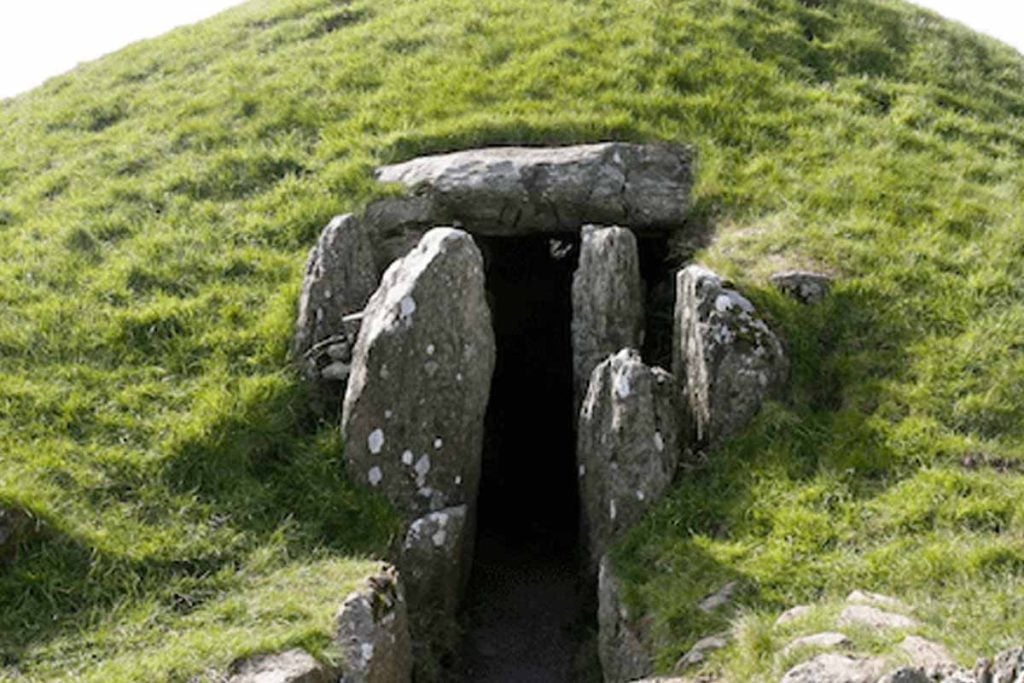A stone corridor, sealed for millennia and heavy with meaning, opens a small window on the oldest social rules. Inside this tomb, objects speak with more force than words, while silence protects what we still cannot know. The setting stays purposefully vague; the signs, however, feel clear. Power left traces. So did grief, trade, and craft. Because everything survived so well, tiny details can shift big ideas. That is why this find matters right now.
Why this tomb changes what we know
Unearthed near Málaga in Andalusia, the megalithic monument stretches an impressive 42 feet. It is stone-built, long, and carefully engineered, with a plan that still reads cleanly after 5,000 years. Local researchers describe it as culturally rich, and the overall preservation is exceptional. Age has not erased intention; architecture still guides the eye.
Upright orthostat slabs rise over six feet, creating a corridor that divides into several internal compartments. Each space shows clear purpose. The scale feels ceremonial, yet the layout remains practical. Paths lead toward rooms designed to hold people and objects, then close them off again. Even cracked stones retain their logic as a structure.
Scholars classify the monument as a dolmen, part of a broader megalithic tradition across southern Iberia in the third millennium B.C.E. Professor Serafín Becerra calls it “one of the most monumental and complete” in the region. Co-director Eduardo Vijande highlights its rare state of conservation, which promises unusually fine-grained insights into daily life and belief.
How the stone monument was built and sealed
Builders capped the corridor with large horizontal slabs, then raised a tumulus of sand and small stones over the roof. The mound protected what lay below and signaled meaning above ground. From a distance, it marked territory and memory. Up close, it controlled access and light, so ritual could unfold.
Across several excavation seasons, teams identified multiple container rooms—ossuaries—designed for groups rather than single elites. The pattern points to collective burial practice. Bones rest with objects, which communicate identity and status. As layers accumulated, the site stayed active. People returned, rearranged, and added, then sealed everything again with care.
The construction sequence matters because it encodes intention. With each slab and refill, the community renewed ties to ancestors and land. The mound’s modest materials—sand and small stones—work with the massive roof blocks to balance effort and stability. Nothing here reads as accidental; technique follows meaning at every turn.
What the grave goods reveal about status and life
Within the tomb, archaeologists recorded “prestigious” rooms holding human remains alongside grave goods. Exotic raw materials stand out: ivory, amber, and carefully chosen seashells. Even in an inland location, the sea still shaped ideas of power and beauty. Objects moved, and with them, stories and obligations also moved.
Flint knappers left a toolkit that signals skill and intent: fine arrowheads, large-format blades, and an “exceptional” halberd—a two-handed, axe-like weapon. The set blends hunting, defense, and display. Sharp edges mix with polished surfaces. Each piece feels made to be seen as well as used, then carried into the afterlife.
Researchers read these goods as status markers and memory devices. According to Juan Jesús Cantillo, inland seashells reflect long-distance exchange networks and the sea’s prestige. That detail threads people to coasts they may never have seen, while trade routes stitched distant communities together. Materials, shapes, and shine became social language.
Inside the tomb: artifacts, networks, and social power
Because preservation is extraordinary, tiny traces can answer bigger questions. Tool wear links gestures to tasks. Residues hint at origins. With careful sampling, teams can map which materials traveled and why. That allows stronger models for exchange, rank, and ritual, not just in one site but across the southern Iberian Peninsula.
Comparative timelines place this monument within a dense tradition of megaliths. Some related structures served as shelters or territorial markers in other regions and periods. Others anchored ritual calendars. Here, compartments, ossuaries, and grave goods favor funerary practice, while the mound shouts presence across open land. Form followed layered functions.
The team’s notes describe rooms as “prestigious,” which suggests social sorting. Yet the collective pattern complicates any simple story of single rulers. Power could have pooled in households, lineages, or seasonal groups. Because context survives so well, analysts can test these models, not rely only on style or guesswork.
From Málaga to wide megalithic horizons
Andalusia—the southernmost autonomous region of Spain—hosts famous megaliths, yet new finds keep broadening the map. Spain’s Dolmen of Guadalperal, the “Spanish Stonehenge,” dates back roughly 7,000 years. It usually sits under water and reappears in drought. Its reemergence reminds us that visibility depends on climate, not just research.
Across the channel in England, Arthur’s Stone stands as another emblem: nine upright stones bearing an estimated 27 tons. That weight compresses labor, coordination, and belief into a single dramatic number. Though the two monuments differ, each demands planning and community effort. Together, they frame a shared megalithic grammar.
Set beside these icons, this tomb adds fresh specificity: rooms for the dead, elite goods, and a roof-and-mound system that held both memory and earth in place. While the headline celebrates treasure, the deeper prize is pattern. With each measured detail, models of mobility, rank, and ritual become testable, not just plausible.
What these remains promise for future understanding and care
Finds like this tomb do more than enrich a museum case; they sharpen timelines, methods, and questions. Because architecture, objects, and bones survived together, analysts can connect materials to behavior with unusual confidence. That means better reconstructions of belief, craft, and exchange, and, just as important, smarter protection for what remains.
